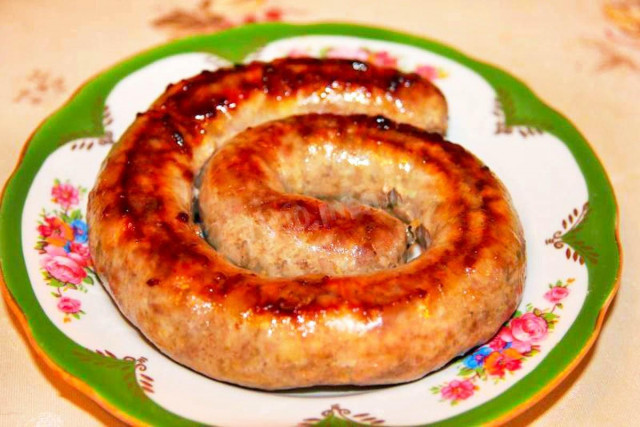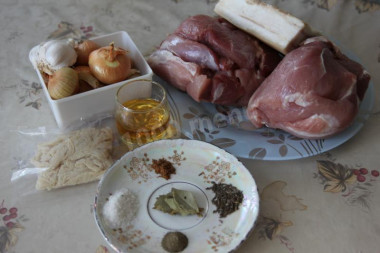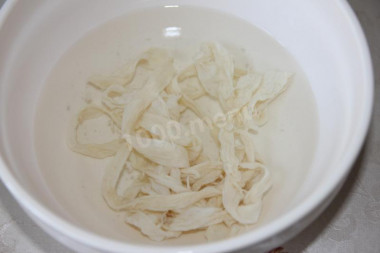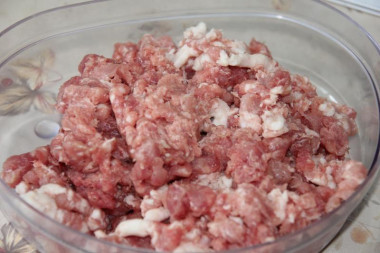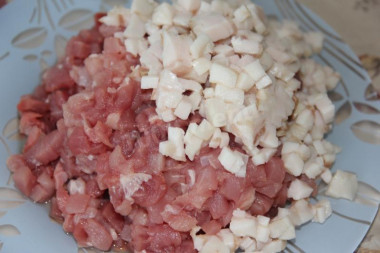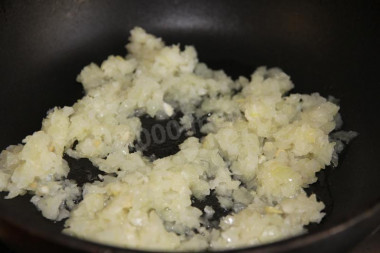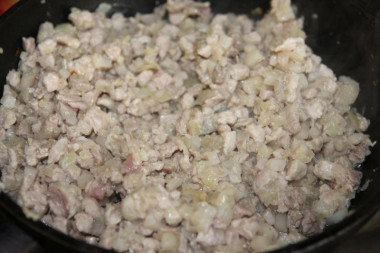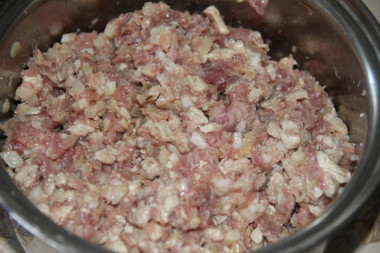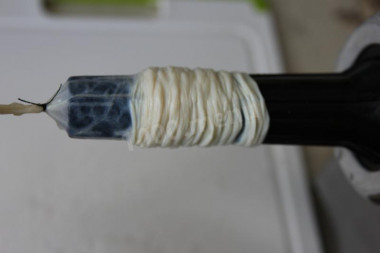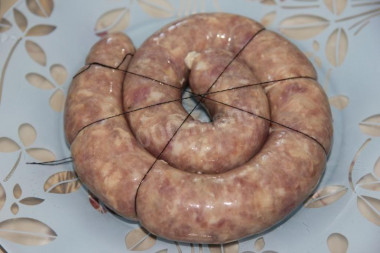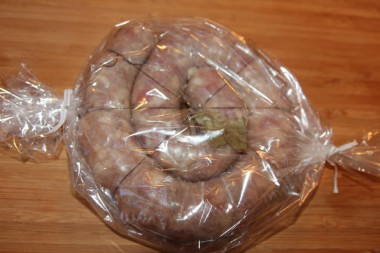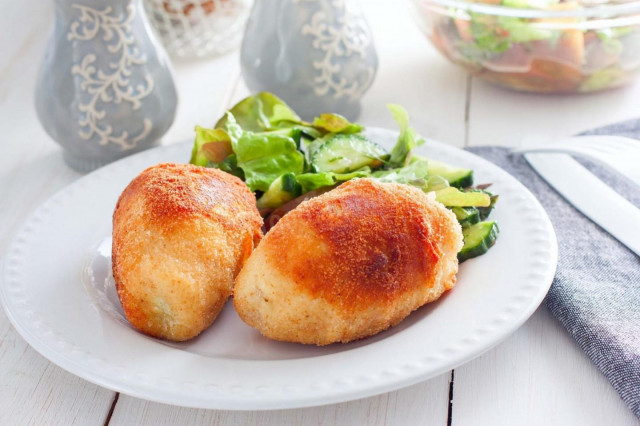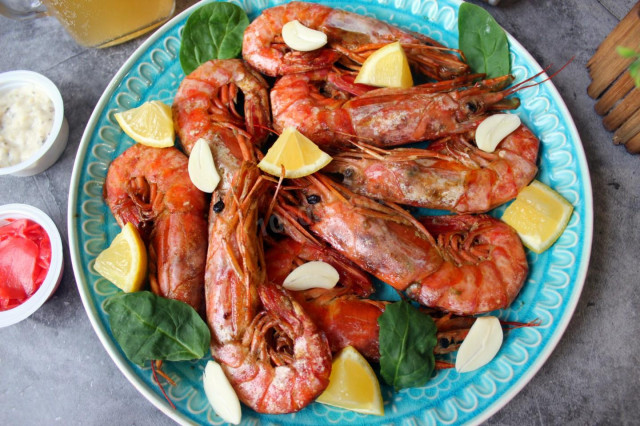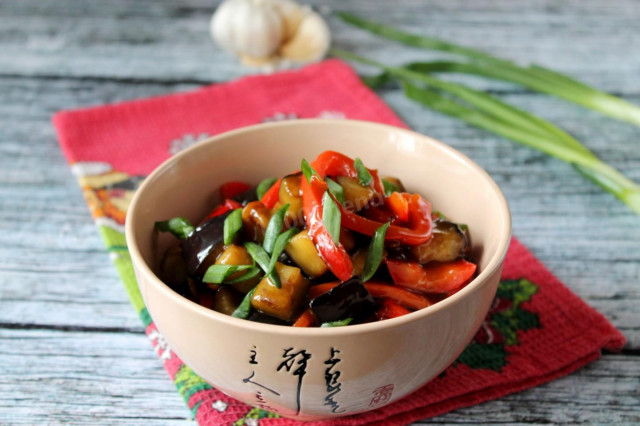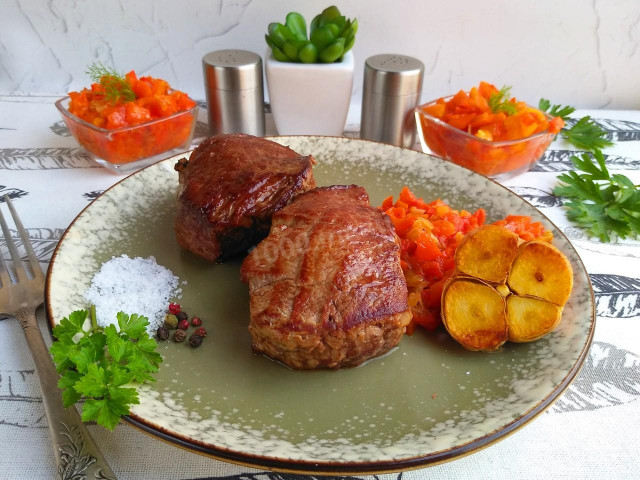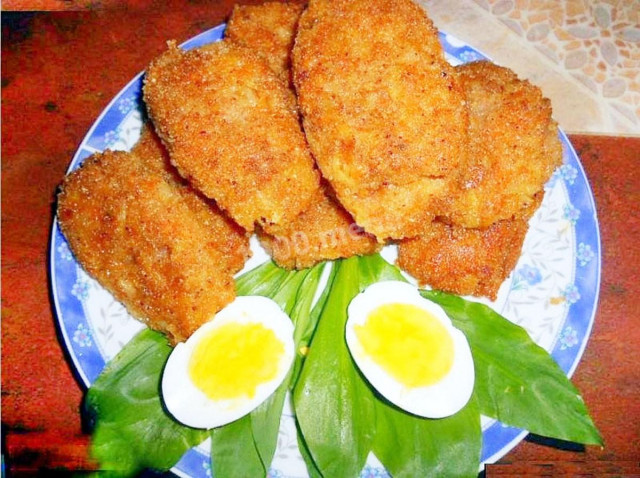Composition / ingredients
Step-by-step cooking
Step 1:
How to make homemade pork sausage in guts? Prepare the products. For this recipe, it does not matter which part of the carcass to choose, as it will still become soft during cooking. But add the fat necessarily — the sausage will turn out juicier. You can adjust the set of spices depending on your preferences. Wash and peel the onion and garlic.
Step 2:
Wash and clean the guts for homemade sausage very thoroughly. Soak them in warm water, in which one tablespoon of salt and one tablespoon of soda are mixed. The intestines should lie in such water for half an hour. After that, rinse them under running water and remove all the film and grease. Then turn the intestines inside out. Put them in salt water again and hold them there while the minced meat is being cooked.
Step 3:
Prepare the minced meat. How to make minced meat? Divide the meat and fat into two parts. Chop the first part using a food processor, blender or meat grinder. Add nutmeg to the meat on the tip of the knife.
Step 4:
Cut the second part of the meat with bacon into very small pieces.
Step 5:
Cut the onion into small cubes (I also scrolled it in the combine). Fry the chopped onion in a small amount of vegetable oil until soft.
Step 6:
Add chopped meat and lard to it. Fry everything together for a few minutes, stirring, not allowing a crust to form. Leave to cool.
Step 7:
In a mortar, grind all the spices except the bay leaf. Mix the rolled meat with the fried, add salt and spices, pour in cognac, squeeze garlic through a press.
Step 8:
Mix everything thoroughly and let it stand for half an hour.
Step 9:
Fill the intestines with minced meat. To do this, it is good to use either a wide funnel or a top cut off from a plastic bottle. Divide the washed intestines into meter-long ribbons and tie each with a thick thread from one end. Put a funnel on the other end and fill the intestines with minced meat through it so that the meat clogs tightly, without air. If you have a special nozzle for a meat grinder, then use it.
Step 10:
When the intestines are filled, tie them with a thread from the other end. Roll the resulting sausage with a snail and tie it with a thread crosswise so that it holds its shape. To prevent the sausage from bursting during cooking, pierce it with a very thin needle every seven centimeters.
Step 11:
Then put the sausage in a special baking sleeve, put a bay leaf inside. Leave it to lie down for an hour, then send it to the oven for 40 minutes at a temperature of 200 degrees.
Step 12:
Then take out the sausage, turn it over to the other side and put it on for another half hour, but already at a temperature of 175 degrees. Serve the finished sausage in any form — it is delicious both hot and cold. Bon appetit!
In addition to pork, any other meat can be used in this dish. Keep in mind that the cooking time, as well as the taste and calorie content of the dish will change. For example, beef is cooked longer than pork, and chicken fillet or turkey is less.
Since the degree of salinity, sweetness, bitterness, sharpness, acid, burning is individual for everyone, always add spices, spices and seasonings, focusing on your taste! If you put some of the seasonings for the first time, then keep in mind that there are spices that it is especially important not to shift (for example, chili pepper).
Keep in mind that everyone's ovens are different. The temperature and cooking time may differ from those specified in the recipe. To make any baked dish successful, use useful information about the features of ovens !
Caloric content of the products possible in the composition of the dish
- Pork fat - 333 kcal/100g
- Pork meat - 357 kcal/100g
- Pork - low-fat roast - 184 kcal/100g
- Pork chop on a bone - 537 kcal/100g
- Pork - schnitzel - 352 kcal/100g
- Pork shoulder - 593 kcal/100g
- Boar's leg - 113 kcal/100g
- Pork - 259 kcal/100g
- Pork fat - 871 kcal/100g
- Melted pork fat - 947 kcal/100g
- Pork rinds - 895 kcal/100g
- Lard - 797 kcal/100g
- Spy - 658 kcal/100g
- Garlic - 143 kcal/100g
- Bay leaf - 313 kcal/100g
- Ground black pepper - 255 kcal/100g
- Cumin - 333 kcal/100g
- Ordinary cognac "three stars" - 239 kcal/100g
- Cognac - 239 kcal/100g
- Salt - 0 kcal/100g
- Onion - 41 kcal/100g
- Pork intestines - 602 kcal/100g
- Nutmeg - 556 kcal/100g

